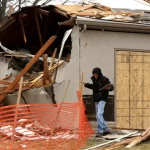Passive fire protection is a vital part of any building’s safety. It helps to prevent fires from starting, and if a fire does start, it can keep it from spreading. The problem is that many people don’t know what passive fire protection is or why it’s important. This guide will answer your questions about passive fire protection systems and explain why it’s so important for buildings.
What Is Passive Fire Protection?
Passive fire protection refers to the materials and devices used to keep a fire from spreading or starting in the first place. The goal of passive fire protection is to control the spread of flames, heat, smoke and other products of combustion. The term “passive” means this type of prevention doesn’t require human intervention once it’s installed.
Benefits Of Using A PFP System
Passive fire protection systems are often the first line of defence in fire safety. They can be used to protect your assets, personnel and the public while also having a low impact on the environment. Here are seven benefits of using a PFP system:
- Protective
The main purpose of passive fire protection is to protect structural members from exposure to fire. The application of flame-resistant materials can also reduce heat transfer and limit the rate of temperature rise within exposed structural members. A protective coating can also be applied on non-structural elements such as doors, windows, stairwells, and other openings that may be vulnerable to fire exposure.
- High Temperature Resistant
Fireproofing materials are designed to withstand high temperatures, which can reach up to 2000 degrees Fahrenheit at certain times during a fire. This makes them ideal for protecting areas that have been exposed to extreme heat or flames, such as furnaces and ovens.
- Non-Combustible
Non-combustible materials do not burn easily and therefore do not contribute to the spread of fire. These materials include concrete, stone and masonry. Fireproof materials are made with non-combustible materials that resist the effects of fire and heat. The materials cannot be penetrated by flames or hot gases. Fireproofing systems typically consist of two layers; a core layer that provides structural support and an outer layer with fire resistance properties.
- Fireproof
Fireproofing is another popular form of passive fire protection. This material helps keep fires from spreading by making it difficult for flames to reach them. It’s often used on structural members like beams and columns to ensure they won’t suffer any damage during a fire.
- Flexible With Application
Passive fire protection systems come in many different shapes and sizes, which means they can be applied to almost any building type or application imaginable. For example, you might use them to protect an entire building or just certain parts of it, like an office lobby or storage room.
- Lightweight And Easy To Handle
Passive fire protection materials are lightweight and easy to handle during installation. The light weight makes it easy to transport large volumes of material to the site of your construction project. This also reduces costs on transportation because you don’t need large trucks or cranes for transportation purposes. You can use smaller vehicles such as vans or pickup trucks instead.
- Bonding Capabilities
Some types of fireproofing systems bond well with other materials to provide added protection against fire damage. For example, spray-applied intumescent coating bonds well with steel and concrete structures to reduce their susceptibility to fire damage during construction projects, such as commercial buildings and large warehouses that require extra protection from fires during construction phases before they’re occupied by occupants or tenants.
Cost of installing Passive Fire Protection Systems
The cost of installing PFP systems depends on a number of factors, including The size and complexity of the project. The more elements you want to include in your system, the higher the price tag will be. The materials used in the system. Some materials are more expensive than others, but they may also last longer or require less maintenance. Whether you choose to hire professional contractors or do it yourself. If you want to save money by doing it yourself, make sure you understand all the steps involved before starting so that you don’t miss anything important which could compromise your safety.
Conclusion:
The way we see it, a passive fire protection system is important because it creates a line of defence in case a fire should occur. It not only prevents the spread of fire but also acts as an alarm to warn people inside the building about what they must do. They are very much versatile and can be mounted on either inside or outside places depending on where you want to install them.

















